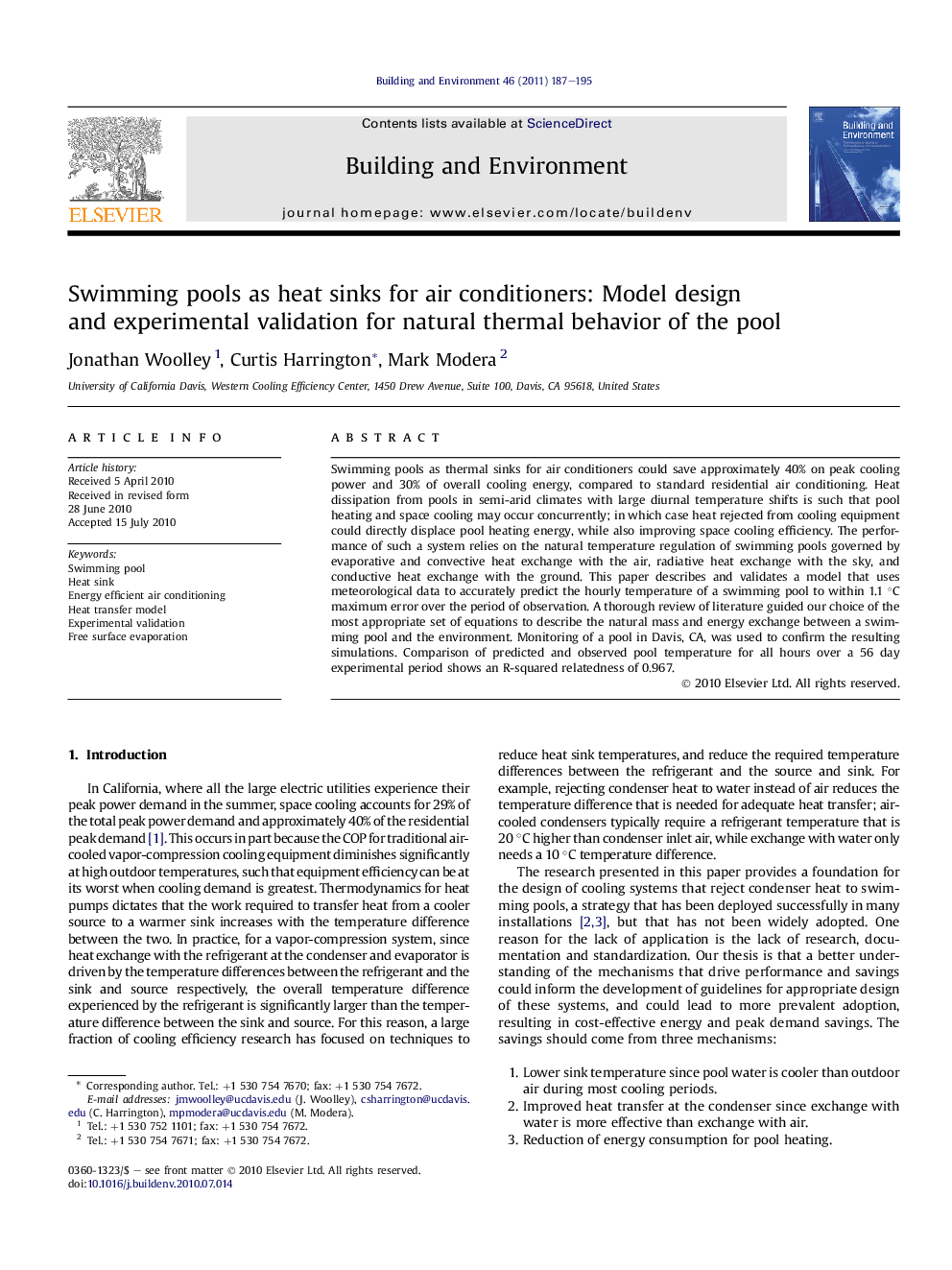| Article ID | Journal | Published Year | Pages | File Type |
|---|---|---|---|---|
| 248901 | Building and Environment | 2011 | 9 Pages |
Swimming pools as thermal sinks for air conditioners could save approximately 40% on peak cooling power and 30% of overall cooling energy, compared to standard residential air conditioning. Heat dissipation from pools in semi-arid climates with large diurnal temperature shifts is such that pool heating and space cooling may occur concurrently; in which case heat rejected from cooling equipment could directly displace pool heating energy, while also improving space cooling efficiency. The performance of such a system relies on the natural temperature regulation of swimming pools governed by evaporative and convective heat exchange with the air, radiative heat exchange with the sky, and conductive heat exchange with the ground. This paper describes and validates a model that uses meteorological data to accurately predict the hourly temperature of a swimming pool to within 1.1 °C maximum error over the period of observation. A thorough review of literature guided our choice of the most appropriate set of equations to describe the natural mass and energy exchange between a swimming pool and the environment. Monitoring of a pool in Davis, CA, was used to confirm the resulting simulations. Comparison of predicted and observed pool temperature for all hours over a 56 day experimental period shows an R-squared relatedness of 0.967.
